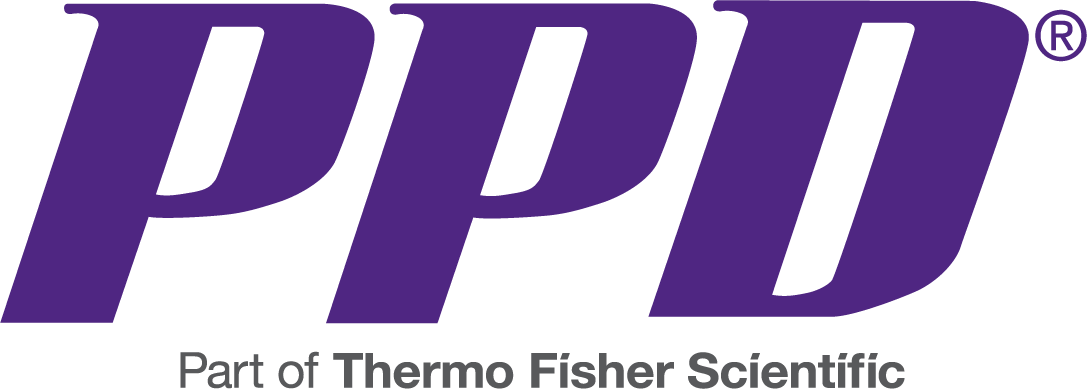Solving challenges in cell therapy clinical trials & effectively delivering complex studies in advanced therapeutics
Immuno-Oncology Insights 2023; 4(2), 79–87
DOI: 10.18609/ioi.2023.012
Cell therapy clinical trials pose a variety of complex challenges. Logistics with cell harvesting, manufacturing, shipments back to sites, patient safety, changing standard-of-care treatments, and patient enrolment due to competing trials can all impact study timelines. In this episode, Vito Romita and Jai Balkissoon outline key obstacles for developing cell therapies in oncology, and provide their insights on overcoming them in order to increase patient access and design safer trials.
Abi Pinchbeck, Assistant Editor, BioInsights, speaks to (pictured above from left to right) Jai Balkissoon, MD, FACS, Vice President, Medical and Scientific Lead, Immuno-Oncology, Cell and Gene Therapy, Head of Immuno-Oncology, Cell and Gene Therapy Center of Excellence, Clinical Research Group, part of Thermo Fisher Scientific and Vito Romita, Senior Director, Global Project Management Project Delivery – Hematology Oncology Therapeutic Unit, Clinical Research, PPD, part of Thermo Fisher Scientific
If you enjoyed this episode, you can listen to all episodes from The BioInsights Podcast wherever you normally get your podcasts.
Follow the Podcast to make sure you don't miss the next episode.
What do you see as the three most important challenges with the current development of cell therapies in oncology?
JB: First, it’s identifying, training and qualifying non-traditional research-experienced sites to be able to run clinical trials in cell therapy. And in addition, to treat patients with the current standard-of-care cell therapies in the community. This is going to involve collaborations between cell therapy-experienced contract research organizations (CROs), sponsors, academic sites, payers, and also regulators, that are all committed to make this happen.
At PPD we have a site coach training program that is dedicated to supporting the training of new research-experienced community sites. It is crucial that they are motivated, committed, and have the resources to become a cell and gene therapy-experienced site. One question is whether there will be a mechanism for research-experienced community sites to become foundation for the accreditation of cellular therapy (FACT) accredited. We assume it will be similar to large academic institutions, as we need more sites with experience to run these cell therapy studies.
We’re going to need more altruistic cell therapy academic sites to not only train and mentor, but also to encourage the next generation of cell therapy-experienced oncologists to consider a career in communities that do not have cell therapy expertise. That’s very important. We also need to develop more mentorship and training programs at academic institutions, where not only community oncologists but also site staff including research nurses and study coordinators can attend on-site training sessions to bring back to their community hospitals.
To achieve these goals we need buy-in from research-experienced community hospitals, including the hospital administration, to bring these complex treatments into their hospital systems. Community sites will need to have assurance from insurance carriers that they will be reimbursed for standard-of-care comparator arm treatments for example, as well as for cell therapy treatments given as standard-of-care.
A second challenge to consider is that for autologous cell therapies using viral vectors for gene modification, the vein-to-vein time can be quite long. Patients may require bridging therapies while waiting for their cells, and some patients may develop disease progression during this time and never receive their manufactured cells. Allogenic or off-the-shelf cell therapies can alleviate some of these challenges with no need for patients to undergo apheresis, and cells readily available to infuse into multiple patients without manufacturing delays. Some off-the-shelf cell therapies can also be given at multiple infusions per cycle, which may improve anti-tumor activity and result in more durable responses. Another consideration regarding manufacturing of cell therapies is how to increase their potency with a longer duration of anti-tumor activity without increased toxicity.
The third challenge is in preventing and managing the toxicities associated with cell therapies. For autologous cell therapies the most significant toxicities are cytokine release syndrome (CRS) and immune effector cell-associated neurotoxicity syndrome (ICANS) seen with chimeric antigen receptor (CAR)-T treatment. Although the majority are Grade 1 or 2, the potential for higher grade toxicities that may occur more than 14 days after infusion have fueled our conservative practices. Patients are monitored closely, often in the hospital for seven days, followed by requirements for the patient to remain in the local vicinity of the study site for about a month after infusion of CAR-T cells.
We need to design better cell therapies that have fewer toxicities, and identify biomarkers that can predict early onset toxicity and also which patients are more likely to develop severe, life-threatening toxicities. We can then develop risk-mitigation strategies and prophylactic measures that may prevent or decease the severity of these toxicities. It is the potential for severe and sometimes life-threatening toxicities that has prevented these advanced therapies from being used by community oncologists.
There are many more considerations, but I see these as the three biggest challenges right now when we’re developing cell therapies, especially in oncology.
VR: One further issue that we have to address is expansion. Jai made reference to some of the logistical complications with respect to running cell and gene therapy trials, and to safety monitoring. You would have to develop a very robust strategy when you start to expand to other countries and other sites, especially as these therapies start to evolve so that they become registrational trials, and as we are entering countries where perhaps there are differences in standard-of-care.
It is crucial to ensure there is a harmonized approach in terms of understanding the different modalities of the therapy in question, and how that impacts training at the site level and execution of the clinical trial.
What can industry leaders, stakeholders and sponsors do to improve patient access for cell and gene therapy clinical trials?
VR: This is a perfect segue from Jai’s conversation about the three most important challenges impeding clinical trials, specifically in the context of adoptive cell therapies, which are highly complex both logistically and in design.
Among these challenges is the underpinning issue of enrolment, which is common across all clinical trials. The current process and mechanism by which most of us conduct clinical trials can’t really evolve without a carefully thought out strategy to enable patients to access available treatment options.
To get back to basics, we need to remember that without understanding the patient’s experience, and their specific challenges across the age, gender, race, and socioeconomic spectrum, we compromise our ability to bring these transformative therapies to market. We are living in an extraordinary era where we now have the capability to introduce precision medicine. This capability is opening up vast possibilities and we – collectively, across all industry stakeholders – have an obligation to make every effort to exploit those possibilities to ensure that no patient remains untreated and left behind.
As an industry stakeholder, we have to make an absolutely concentrated effort to collect data representative of patients across all cultural and societal spectrums. Lack of inclusion and representation of clinical trial data from patient populations and subpopulations limits the scientific and medical validity of treatment-derived outcomes and patient-reported outcomes. Those outcomes are essential for a successful clinical trial from the perspective of the patient, their caregivers, our regulators, and of course our payers.
I’d like to spend a minute or two on some interesting statistics. People of color make up approximately 40% of the population in the US, yet as low as 2% participate in clinical trials. Approximately 52% of the population in North America – and we have similar statistics in other parts of the world as well – possess middle to lower-level performance in relation to literacy and comprehension. This is no doubt a significant obstacle in relation to patient access to clinical trials, their access to sites, and of course the whole patient onboarding process. Finally, a large percentage of racial and ethnic minority groups remain underrepresented in clinical trials – but disproportionately present with higher incidences of chronic disease.
We have to focus on the problem statement, which is maintaining the status quo and complacency around how most clinical trials are conducted. This does not afford society nor our industry the urgency to address many of these unmet medical needs. Without a deliberate and holistic mechanism, and an infrastructure to educate and direct patients to clinical trials, we limit enrolment and we limit our ability to provide for these patients.
Patient awareness of their own conditions and perception of the industry is definitely one consideration and area of focus. Primary care physicians’ awareness of ongoing clinical trials, and their own availability to educate and guide patients to their best treatment options is another. And then we have to consider the patient’s ability to navigate through publicly available resources, and/or access resources to reach these treatment centers. These areas of focus have now become areas of concern given the massive influx of research and development and information overload with respect to clinical trials in general, but especially with respect to cell and gene therapy trials.
The solution is not by any means a quick fix. Many of the ethnic, racial, and/or other minority groups lack the skills, the resources, and the time, and given their historical context, they view industry with substantial anxiety and mistrust. So how do we engage these communities and patients to develop that trust? How do we remove some of the logistic and financial barriers? And with respect to clinical literacy, how do we educate?
There are a number of approaches we should be considering. One is around cultural competency and training for clinical research professionals across all segments of the industry. This training should be focused on identifying what those barriers are, whether it be bias or discrimination, and the training directed to all site-facing and patient-facing research professionals.
The next area of consideration is identification of sites, and communities, where race and ethnic minority groups are concentrated. We have a number of technologies, using epidemiology data, prevalence data, and data mining capabilities, to identify where these disparities are and where these concentrations of minority groups reside with respect to geographic distribution.
The next area is developing a sustained level of trust and engagement throughout the communities. Continuous, sustained outreach to communities must be focused on education and again on developing that level of trust. This is done through a number of venues, whether that be patient advocacy groups, community outreach using social media, involving trusted key opinion leaders, and increasing the visibility of principle investigators and healthcare professionals who are representative of these racial and ethnic minority groups, and that advocate for those communities. Another approach is developing a very strong referral network. Lastly, the development of patient advocacy boards, where we involve academic centers, pharma, CROs, communities, community health networks, patients themselves, and the government, is absolutely key in solidifying this long-term strategy.
Trial design is another aspect of this. We have reliable data to show that if we incorporate the patient’s voice in trial design, this will optimize the results on the backend in terms of enrolment and engagement. The US Food and Drug Administration reauthorization act came out in 2017 and encourages the incorporation of patient experience data in all new drug applications. The development of the informed consent form and patient-facing materials as well as other data capture materials should be manifested in such a way that they’re culturally competent and relevant. We have mechanisms in place where we can track our success rate in including these diverse patient populations in real-time.
The last point is around patient retention. In the context of cell and gene therapy trials, where we are administrating a genetically modified product or genetically modified cellular entity, the follow-up period is 15 years. So how do we manage patient retention? This leads into my next point, which is about the establishment of patient-centric and supportive services. We can do this by leveraging our technological capabilities such as televisits and telemedicine. We have infrastructure now to ensure we can effectively and efficiently reimburse for travel, time off from work, and childcare. We have mechanisms and infrastructure in place to manage the logistics, meaning we can book air and ground travel, and accommodation. Many of these trials are situated quite a distance from where the patients reside and may require in-campus or in-hospital stays. Another piece is providing educational and support materials for the patient’s journey, supporting their schedule compliance by interacting with them pre- and post-visit, and then continuing that dialogue with respect to their involvement and experience.
The last point for this question is about truly overcoming the status quo. We have a plethora of tools, digital technologies, and well-defined strategies available to us. And yet, these aren’t widely adopted as part of the long-term strategy to elevate underrepresented communities so that these communities are prepared to make informed choices. The considerations and challenges presented here are not necessarily novel, but certainly the focus on these issues has been intensified.
We have to learn to build the plane while we fly it. Overcoming the inertia around major investment in these tools should be part of a broader strategy to address patient diversity and inclusion, and have a positive impact on enrolment.
How can we make complex cell and gene therapy trials more understandable to patients and their primary caregivers?
VR: In addressing the previous question I referred to obstacles associated with clinical literacy and potential issues around alienation and trust. Addressing historically embedded biases requires collaboration across academia, community centers, and community healthcare networks, healthcare professionals, pharma, CROs the government, and of course the patient.
What we have not discussed is the actual onboarding of the patient. How do you engage with a patient who may have limited reading, writing and/or language skills, and educate them on the complexity of a cell therapy trial? There are short and potentially long-term risks, along with benefits, associated with conditioning and cell infusion in the context of an adoptive cell therapy, or a trial that uses a genetically modified cellular entity. There are genetic and reproductive implications. They need to understand and weigh these considerations against their current conditions, life expectancy, and available treatment options.
I referenced the consent form in my previous response, and simplification of that consent form is absolutely key. Approaches such as videos, illustrations and demonstrations can easily simplify the message and demystify the challenges and, to some extent, the science behind cell and gene therapies. We can use the e-consent process and televisits to engage directly with patients and caregivers in the comfort of their homes, and again provide patient-facing and educational materials that are culturally competent and relevant.
Finally, what can be done to help design safer cell therapy trials?
VR: There are considerations that have to be taken into account during the proof of concept. These include establishing and monitoring safety outcomes from first-in-human trials, and continually watching with go/no-go decisions. Development of adaptive trials that will again incorporate go/no-go decisions as we start to enroll patients and as the safety data begins to develop, is another aspect.
Incorporation and inclusion of data safety monitoring boards, as well as clinical oversight, is key to ensuring that there is a manageable approach to safety management and surveillance. Using and relying on digital technologies and trending analysis is another way to incorporate, within the context of a clinical trial, a mechanism to look at the data – not only on an individual patient basis, but aggregate data to help us make strategic choices and/or provide strategic decisions and direction.
Biographies
Jai Balkissoon, MD, FACS, is a surgical oncologist and the medical and scientific lead for immuno-oncology, cell and gene therapy at PPD and is the visionary behind the creation of the PPD Immuno-oncology/Cell Therapy Center of Excellence. With more than 25 years’ experience in both clinical practice and clinical research, Dr Balkissoon is committed to capitalizing on advances in the rapidly changing therapeutic landscape to establish PPD as a world-class partner in advancing immunology-oncology/cell therapy studies. His personal immuno-oncology and cell therapy experience includes treating patients with advanced melanoma, kidney cancer and non-Hodgkin lymphoma with adoptive cell therapies and vaccines either with or without gene modification. He developed an immunotherapy program in Northern California for treating advanced melanoma and kidney cancer patients with high-dose interleukin-2. At PPD he has been the therapeutic advisor for cell therapy studies in oncology and provides drug development strategy, medical, scientific and product development guidance to both external clients and internal PPD clinical operations and business development teams. He also consults on investigational new drug submission and clinical input toward protocol development, including adaptive designs when feasible. With extensive clinical oncology experience and as a senior executive in the pharmaceutical and biotech industries, Dr Balkissoon joined PPD in 2013 after previously working at Genentech and Oxigene in South San Francisco where he was Vice President of clinical research. Dr Balkissoon holds a Bachelor of Science in biology from Beloit College in Wisconsin and a medical degree from Howard University College of Medicine in Washington, D.C. He completed a general surgery residency at Howard university and a surgical oncology and immunotherapy fellowship at the National Cancer Institute (NCI) in Bethesda, Maryland.
Vito Romita is a clinical research professional with 26+ years of experience in the drug development industry primarily in the CRO environment and has worked with small, mid-sized biotech and large pharma. Vito obtained his PhD from McGill University (Montreal, Quebec, Canada) and graduated with honours.Vito has and continues to dedicate his career to advancing therapies across several indications applying his deep expertise in operationalizing complex clinical trials across all phases; the last 15 + years focused on haematology-oncology with a more recent emphasis in areas of immuno-oncology and adoptive cell and gene therapies, an area rapidly evolving over the last decade.
Affiliations
Jai Balkissoon, MD, FACS
Vice President, Medical and Scientific Lead, Immuno-Oncology, Cell and Gene Therapy, Head of Immuno-Oncology, Cell and Gene Therapy Center of Excellence, Clinical Research Group, part of Thermo Fisher Scientific
Vito Romita
Senior Director, Global Project Management Project Delivery - Hematology Oncology Therapeutic Unit, Clinical Research, PPD, part of Thermo Fisher Scientific
Authorship & Conflict of Interest
Contributions: All named authors take responsibility for the integrity of the work as a whole, and have given their approval for this version to be published.
Acknowledgements: None.
Disclosure and potential conflicts of interest: Balkissoon J discloses he receives support for meetings/travel from Thermo
Fisher Scientific. He has stocks/stock options in Thermo Fisher Scientific. The other author has no conflicts of interest to disclose.
Funding declaration: The authors received no financial support for the research, authorship and/or publication of this article.
Article & copyright information
Copyright: Published by Immuno-Oncology Insights under Creative Commons License Deed CC BY NC ND 4.0 which allows anyone to copy, distribute, and transmit the article provided it is properly attributed in the manner specified below. No commercial use without permission.
Attribution: Copyright © 2023 PPD, part of Thermo Fisher Scientific. Published by Immuno-Oncology Insights under Creative Commons License Deed CC BY NC ND 4.0.
Article source: This article is based on an podcast with Jai Balkissoon and Vito Romita which can be found here.
Podcast recorded: Mar 22 2023; Revised manuscript received: Apr 5 2023; Publication date: Apr 18 2023.



